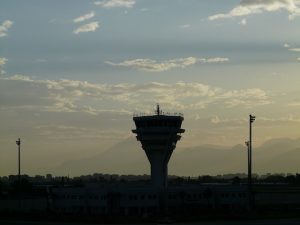
Statistics show that there are nearly 10,000 active flights at any given time. Even with all of these flights, accidents are rare. According to the International Air Transport Association (IATA), the accident rate for airplanes is roughly 1.21 per million sectors, making it among the safest forms of transportation available. Air traffic control, of course, plays an important role in facilitating safe flights for private and commercial airplanes alike.
What Is Air Traffic Control?
Air traffic control is a flight service offered by ground-based air traffic controllers. Its primary purpose is to manage the movement of aircraft within controlled airspace and on the ground at airports
Controlled airspace refers to designated portions of the sky where air traffic control has jurisdiction. Air traffic control monitors and directs aircraft in these areas to ensure they maintain safe distances from each other. Some portions of the sky receive more traffic than others. Therefore, air traffic control must direct and guide the airplanes in these areas so that they maintain a safe distance from each other.
Radio Communications
Pilots communicate with air traffic control via radio. The cockpits of modern-day airplanes are equipped with radios. Using these Very High-Frequency (VHF) radios, pilots can communicate with air traffic control.
Clearance Directives
When communicating with air traffic control, pilots may receive clearance. Clearance is the metaphorical “green light” to perform a flight-related task. Pilots often require clearance before taking off, landing or changing their altitude.
Declare Emergencies
Flying is significantly safer than driving, but emergencies can still happen. Whether there’s a fire aboard the airplane or a passenger is experiencing a medical emergency, the pilot may relay this emergency to air traffic control. Air traffic control may then be able to prioritize the airplane for an emergency landing. Time is of the essence during emergencies such as these. With the help of air traffic control, pilots can land their airplanes more quickly to ensure the safety of all passengers.
Towers vs Centers
When most people think of air traffic control, they envision the tall towers overlooking airplanes. While towers play an important role in the operations of air traffic control, there are also centers.
Air traffic control centers are used specifically to manage airplanes once they are in the air. Air traffic control towers, on the other hand, are used to manage airplanes at and around airports.



